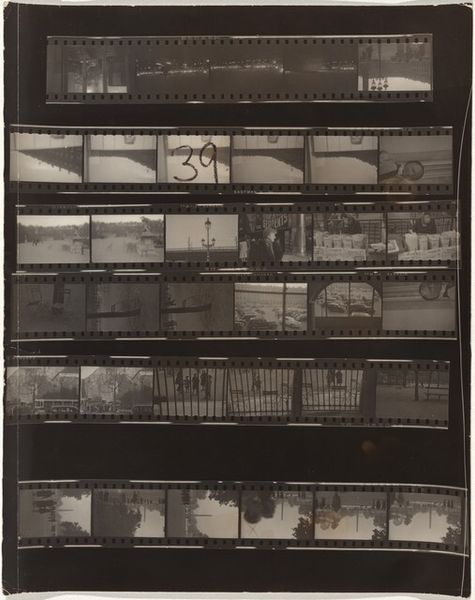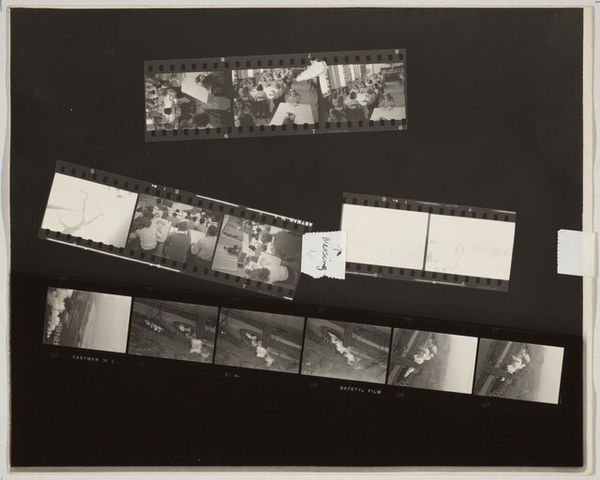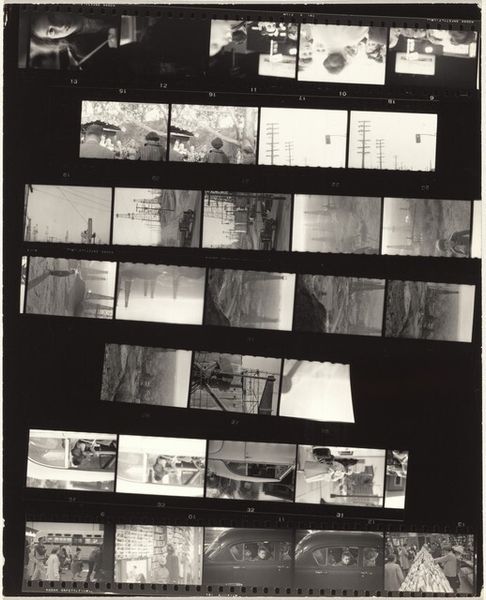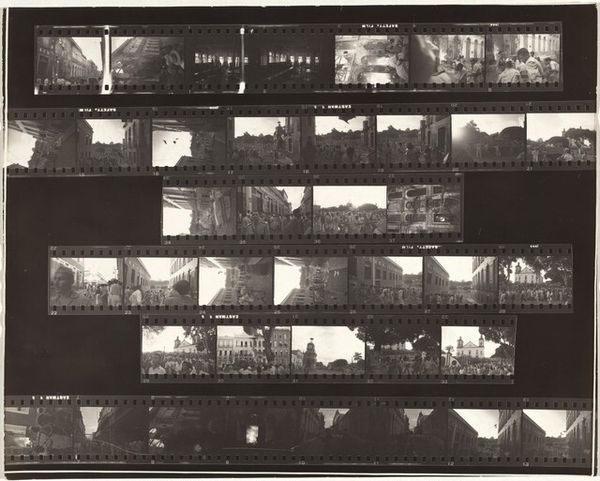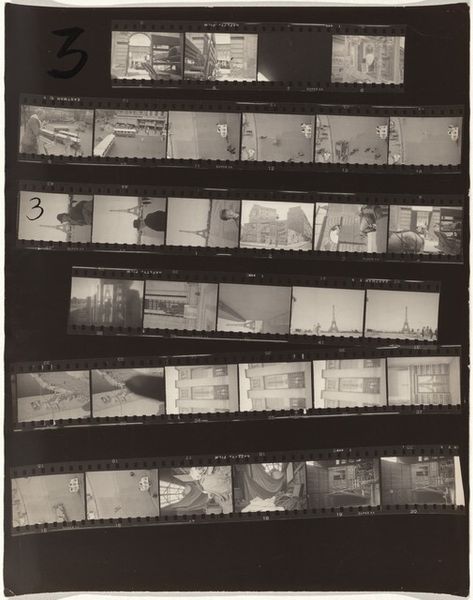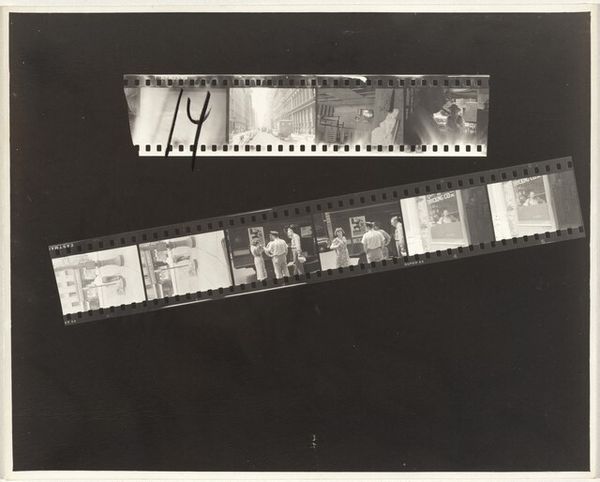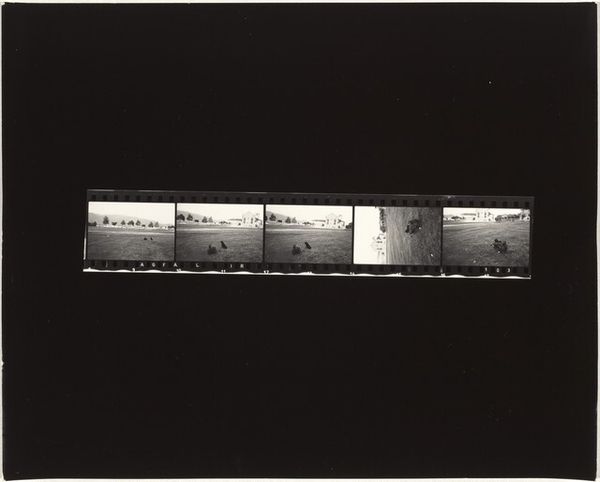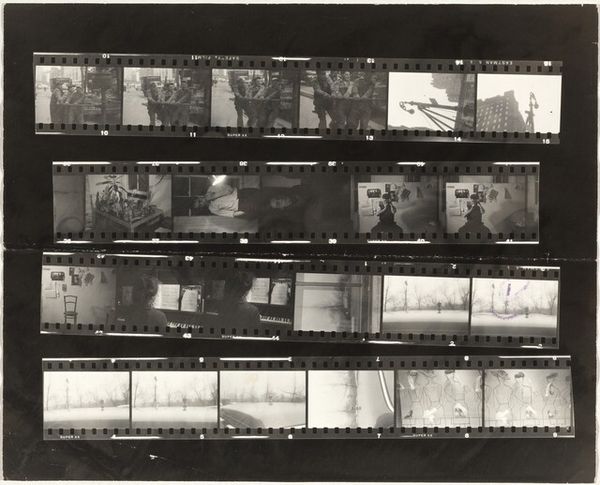
Dimensions: overall: 20.2 x 25.2 cm (7 15/16 x 9 15/16 in.)
Copyright: National Gallery of Art: CC0 1.0
Editor: Here we have Robert Frank's "11th Street story no number" from 1951, a gelatin-silver print. The way it's presented as a strip of film gives it a sort of fragmented, almost voyeuristic feeling. What strikes you about it? Curator: It’s fascinating to consider this as a study of everyday life, mediated through the lens and presented almost as evidence. Notice the Coca-Cola advertisement juxtaposed with children playing. How does the context of post-war consumer culture, emerging so strongly in the American landscape, affect the perception of these "ordinary" moments? Editor: I see what you mean! It's like the innocence of childhood is being framed by the rise of commercialism. Is Frank making a statement about the American Dream, maybe a subtle critique? Curator: Perhaps. Or, is he simply recording the unvarnished reality of urban life? The 'decisive moment', as Cartier-Bresson would say. What is so revolutionary is not the content of the photos, it's the visual vocabulary. What's being 'said' here? Why does it look like that? Consider that he shot a lot of footage on the fly in his car, making images, as he later called them, ‘at the speed of life.’ Editor: So, it’s more about capturing the rawness of the moment than constructing a perfect image? And maybe also about availability and democratizing photography and art. Curator: Exactly! Frank challenged the established aesthetics, paving the way for future generations of photographers. He redefined the very notion of what constituted "artistic" photography, shifting it towards a more personal, subjective, and often socially conscious form. This image shows us an immediate connection and how one can be 'part' of it through active recording of urban history. Editor: That makes me think about how we, as viewers, are also implicated in this story, part of this continuum. It’s not just a detached observation. Curator: Precisely. These photographs remind us that art is not separate from life, but an integral part of it, shaping our perceptions and reflecting our realities. It leaves us wondering how photographic realism shifts according to technologies and ideologies of art institutions.
Comments
No comments
Be the first to comment and join the conversation on the ultimate creative platform.


